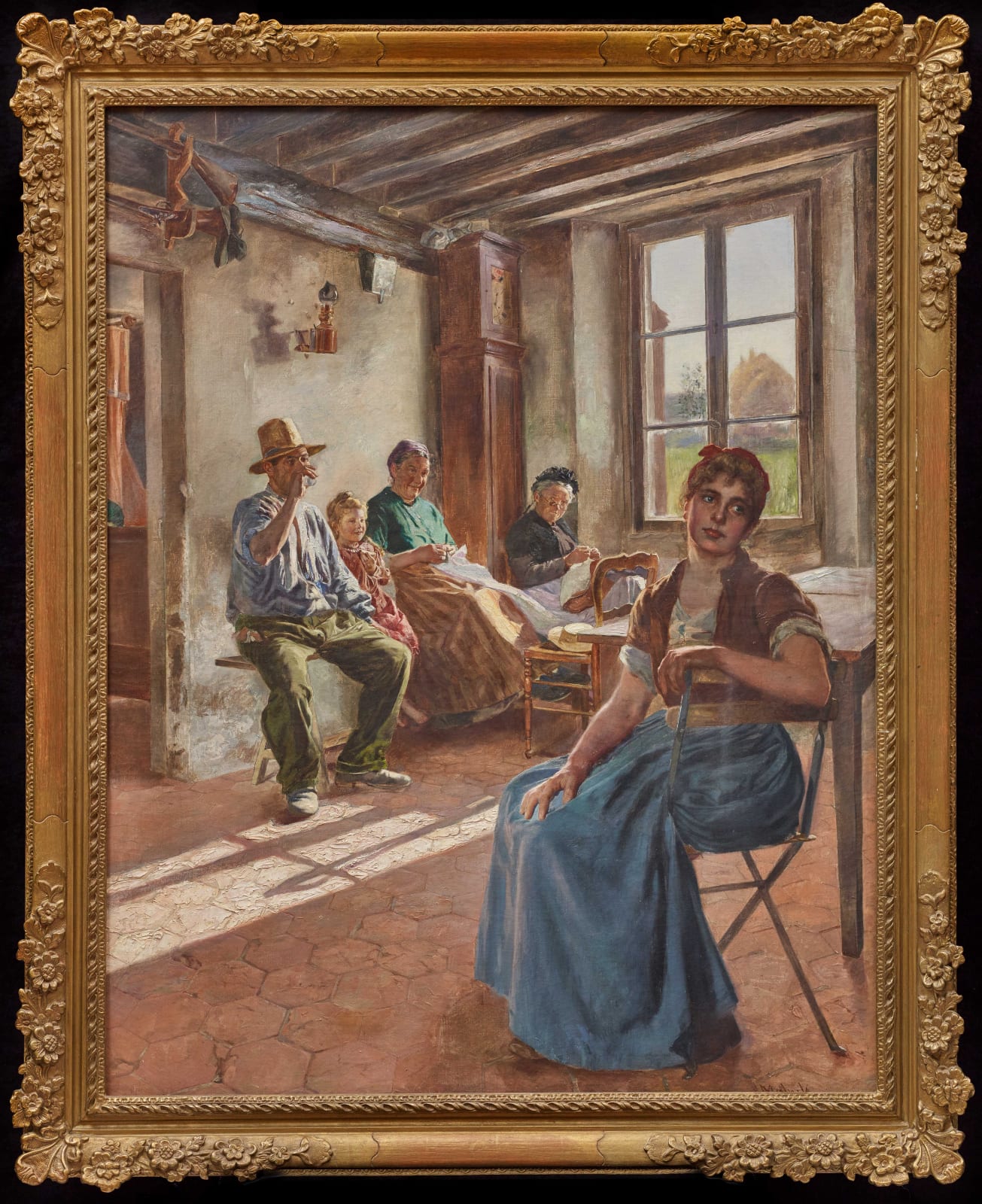Camillo Melnik
Further images
Camillo Melnik (b. 1862)
A Rural Interior
Oil on canvas,
signed lower right: Melnik. Painted circa 1890.
111.5 cm x 86.5 cm.
Working in both oils and watercolours, the subjects of Camillo Melnik’s paintings ranged from portraiture and beautiful ladies in historical dress to genre scenes and views of Paris. While his formal portraits depicted society figures, his genre paintings tended to depict rural folk in a domestic setting, of which the present oil is a fine example. It portrays four generations of one family from the young girl who sits happily between her father who drinks from a glass and her grandmother. The latter, like her own mother who also sits on a bench, looks up from her sewing. While the eye is drawn to the various incidental details such as the guns on the wall, the longcase clock in the corner and the haystack outside, the main attraction is the young woman who sits expectantly in the foreground.
Camillo Melnik was born in 1862 at Mlada Boleslaw, north east of Prague in the central Bohemian region of what is now the Czech Republic. He made his name in Paris, especially when exhibiting at the Salon des Artistes Français, where for instance he showed a “Portrait de Mme H B” in 1886 and a “Portrait de M M. P” in 1889. That same year he was awarded a bronze medal and later received an honourable mention when showing his work at the Exposition Universelle in 1900. Before arriving in Paris, he lived in Munich at 11 Schwanthalerstrasse and studied under the allegorical and genre painter Wilhelm von Diez (1839-1907) who was appointed professor at the Munich Academy of Fine Arts in 1871. Melnik subsequently moved to Paris. There he furthered his artistic education under Léon Bonnat (1833-1922), who taught the evening course at the Ecole des Beaux-Arts in Paris from 1883 until in 1888 when he became a chef d’atelier at the same institution. Famed for his portraits that reflected his love of Spanish masters and a strong sense of chiaroscuro, Bonnat was to have a strong influence on Melnik’s own art.





